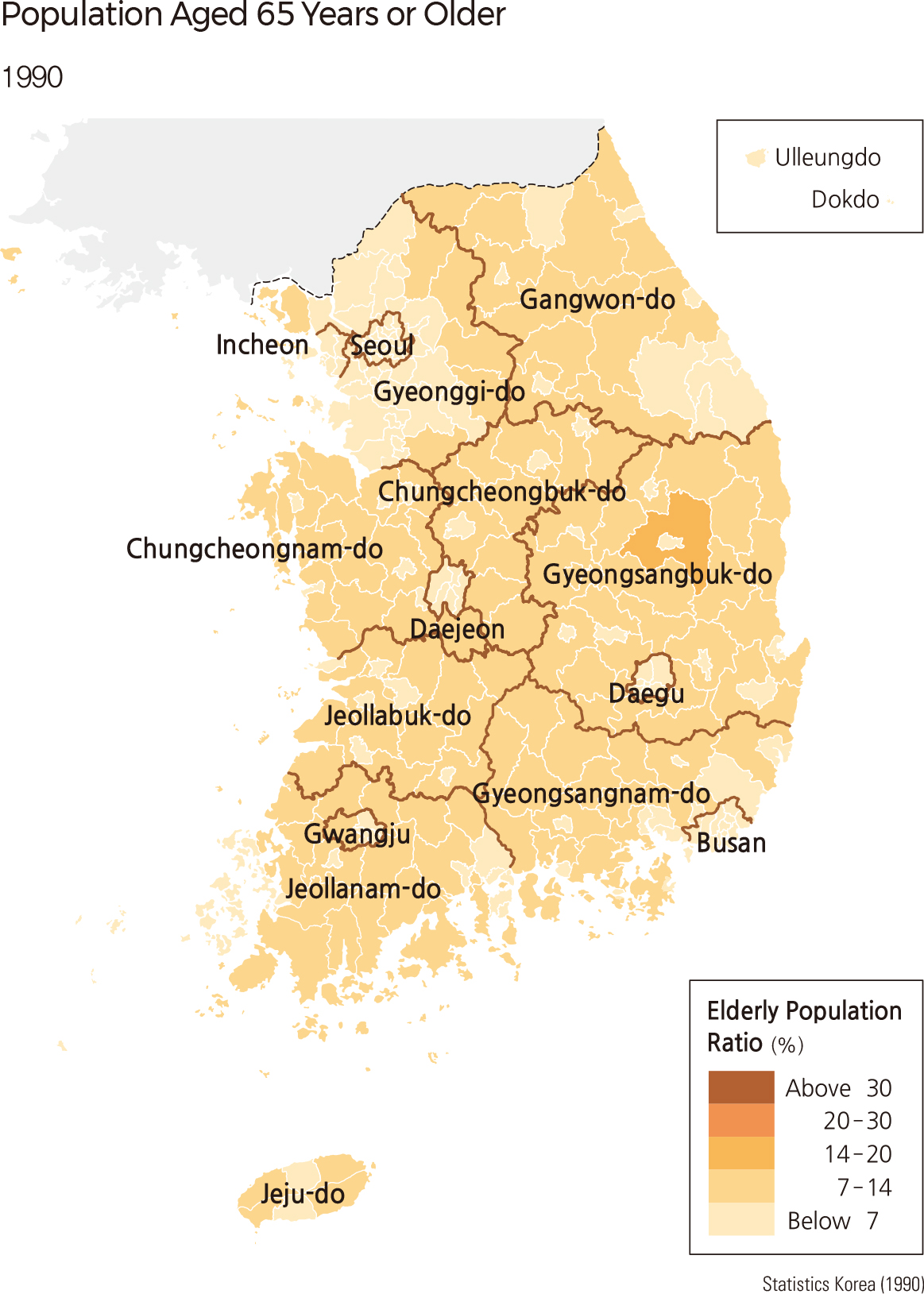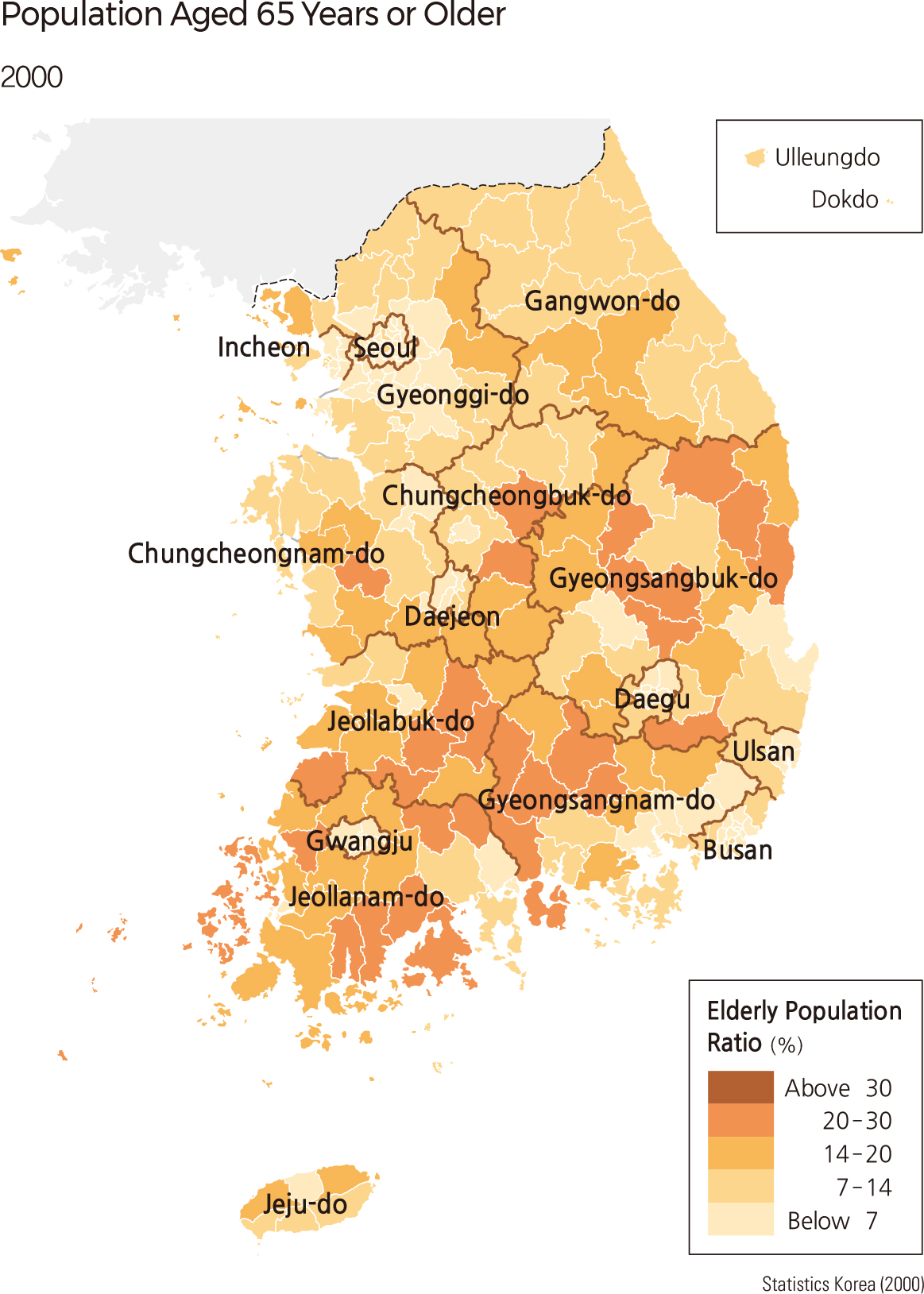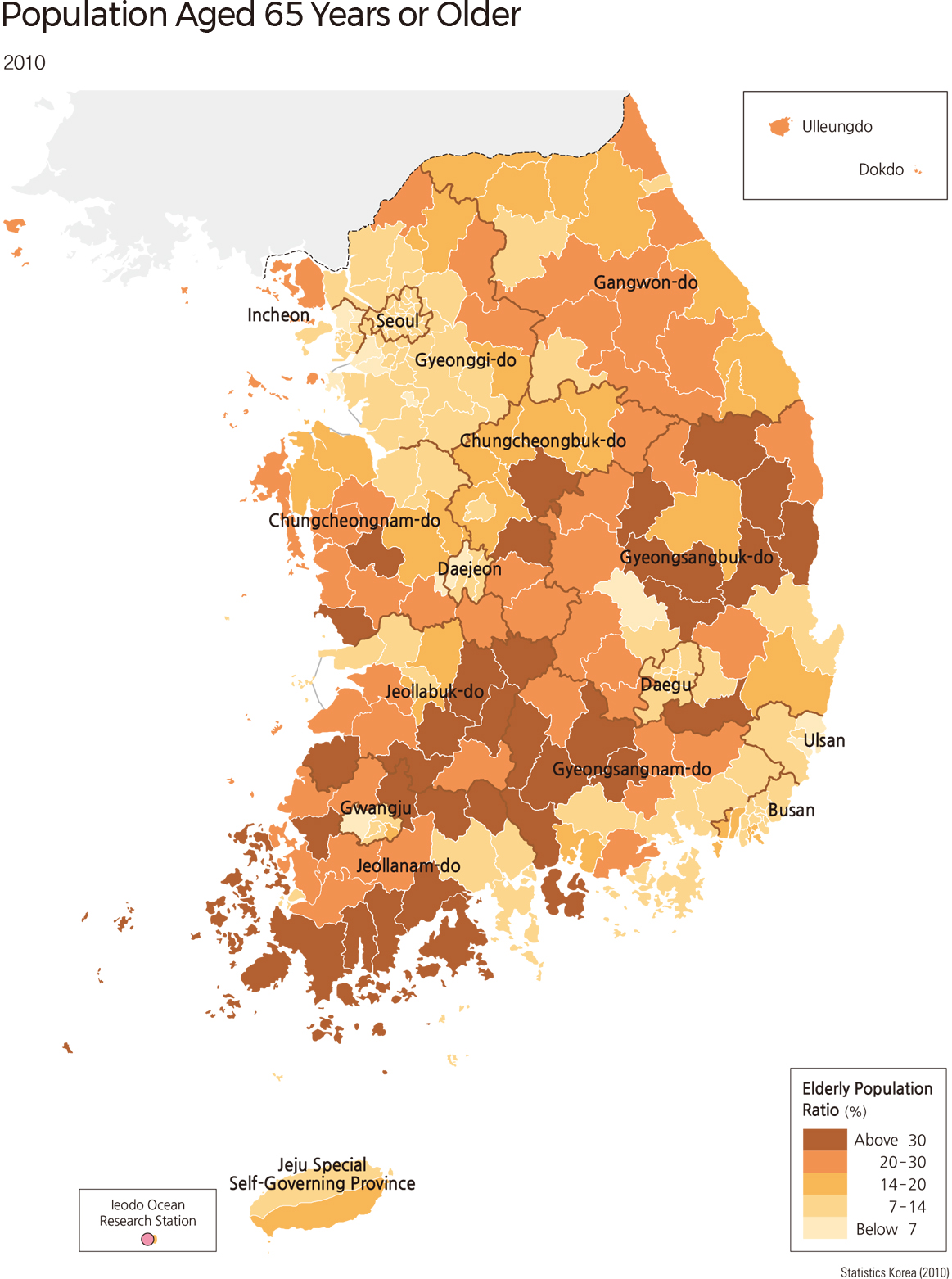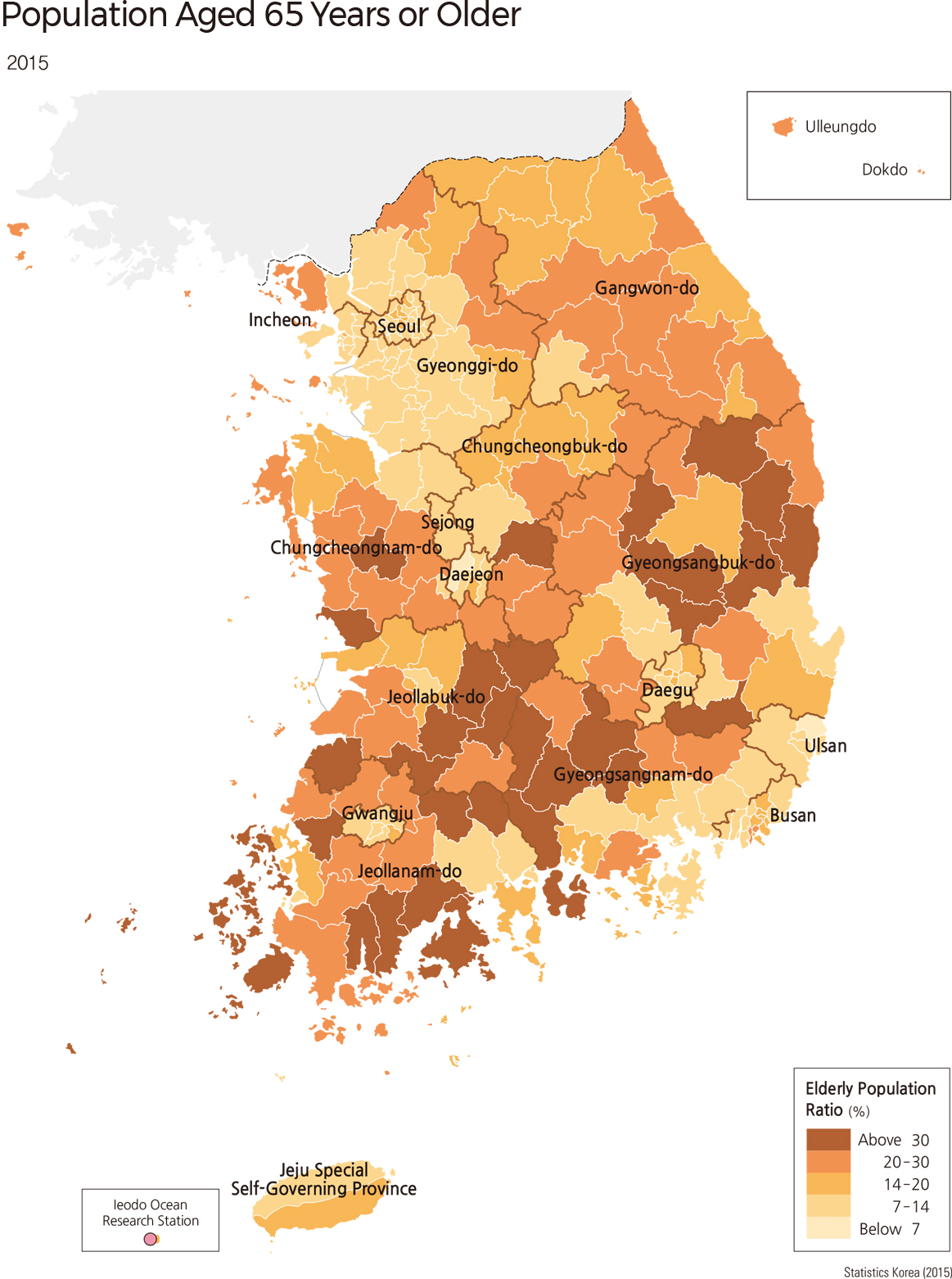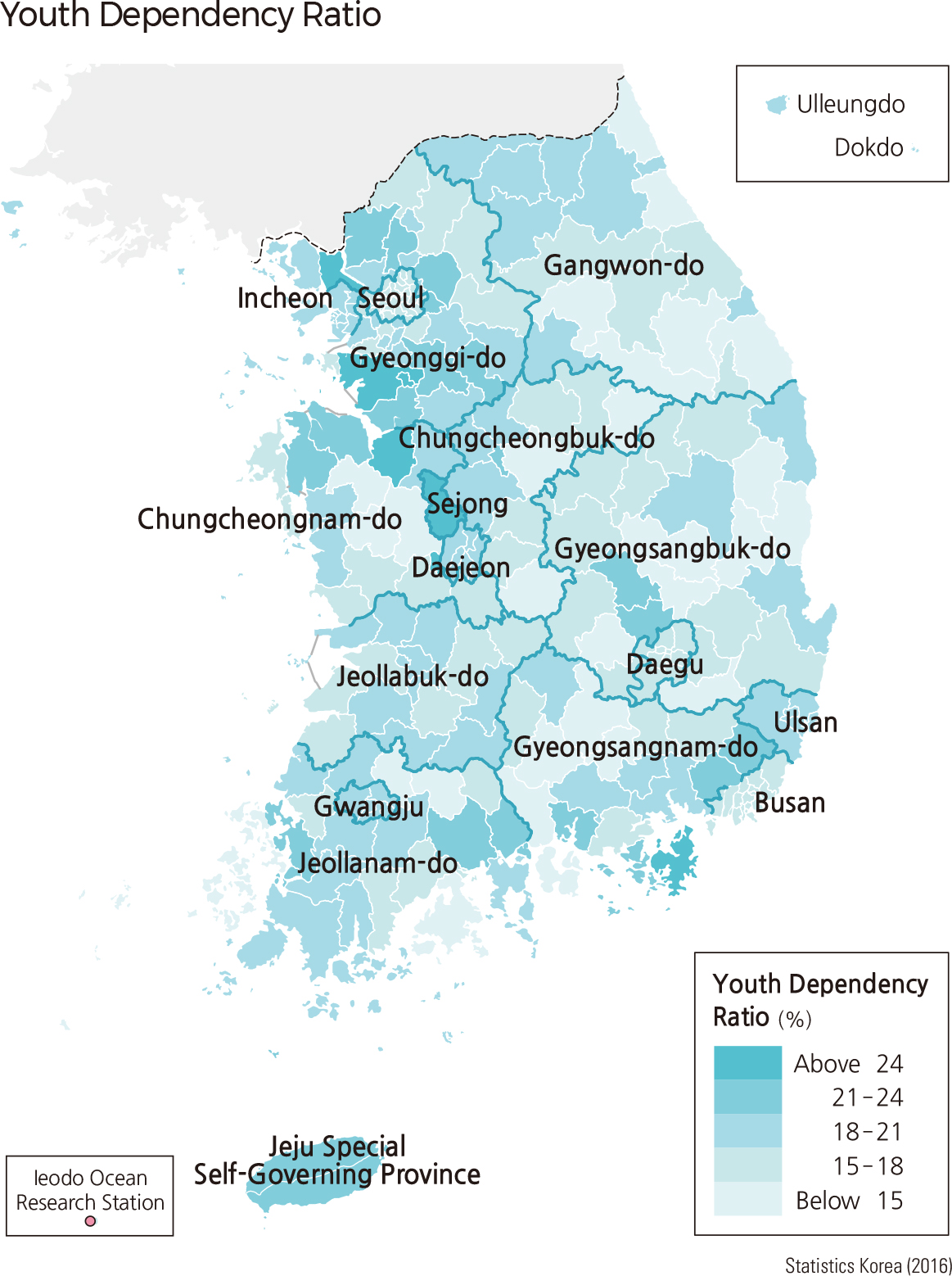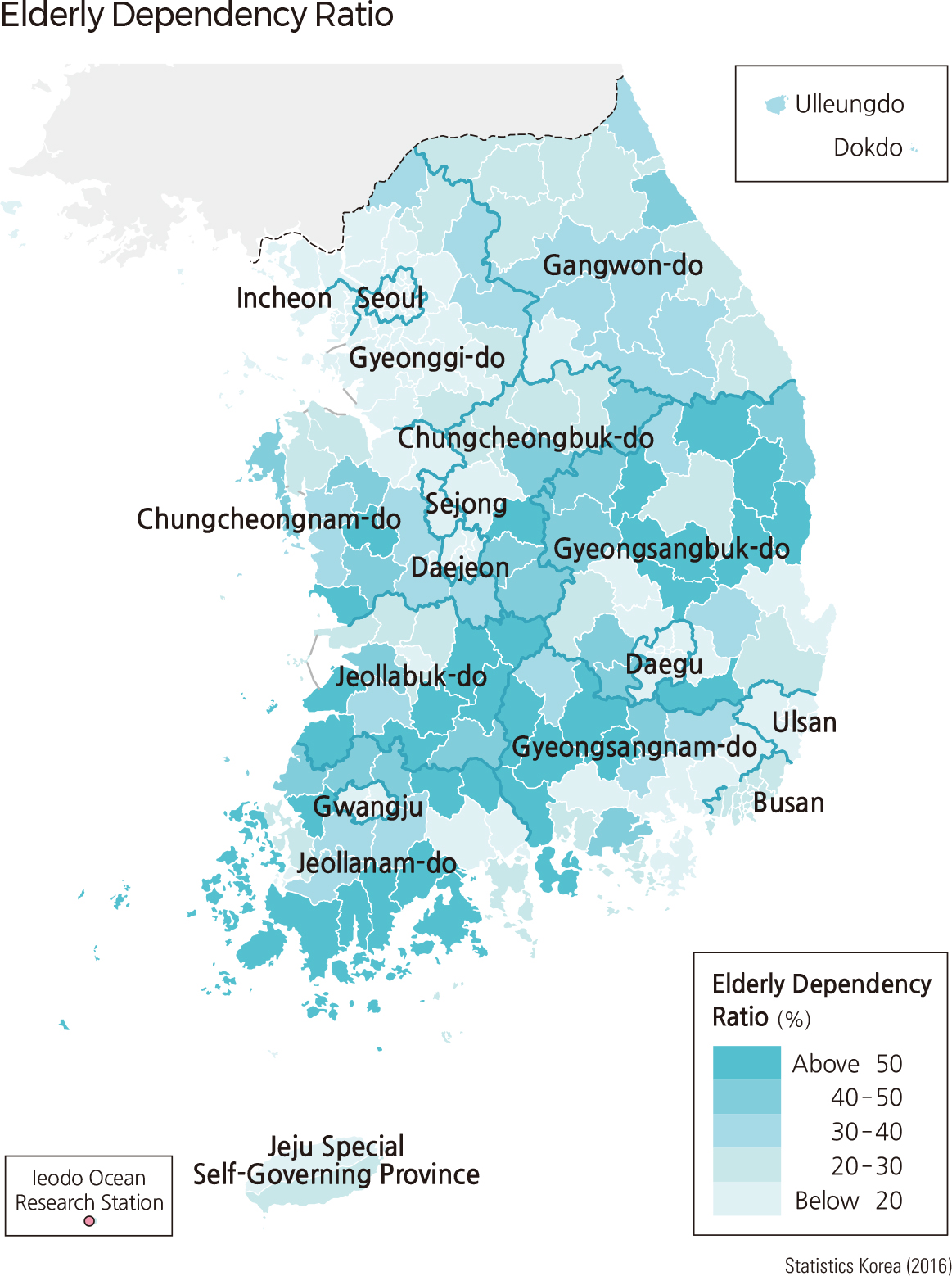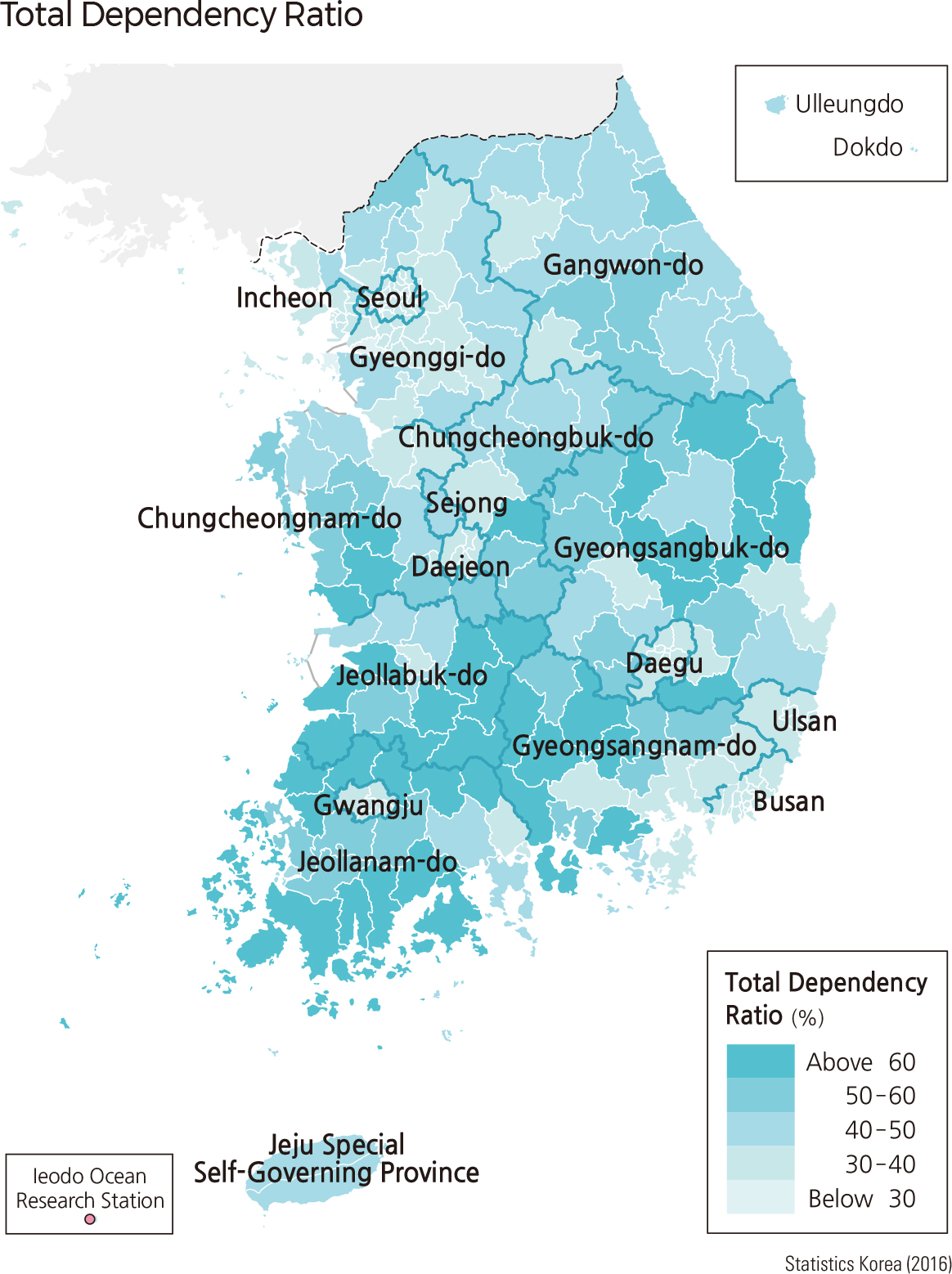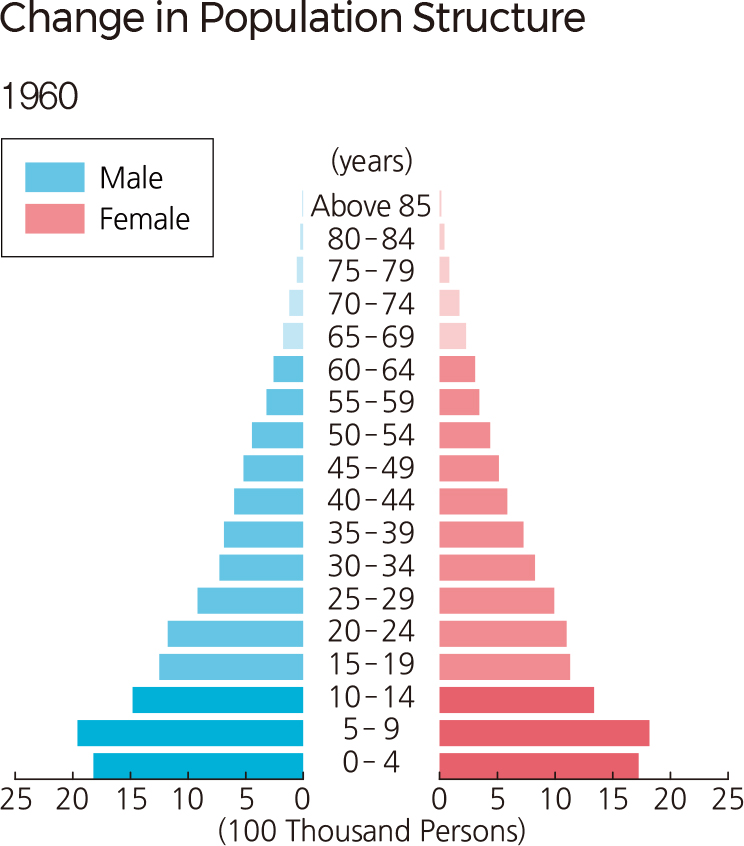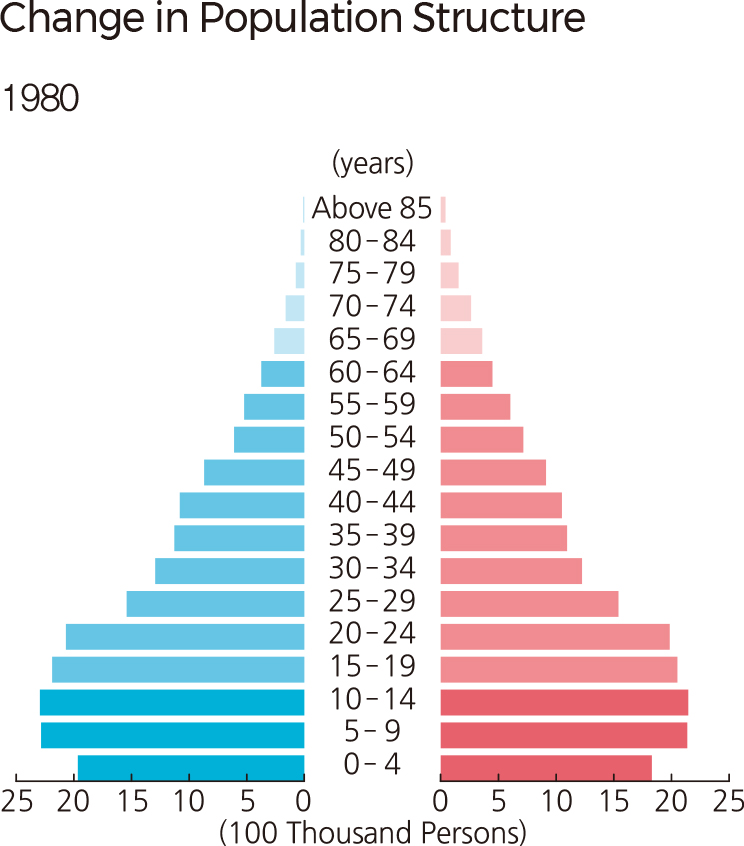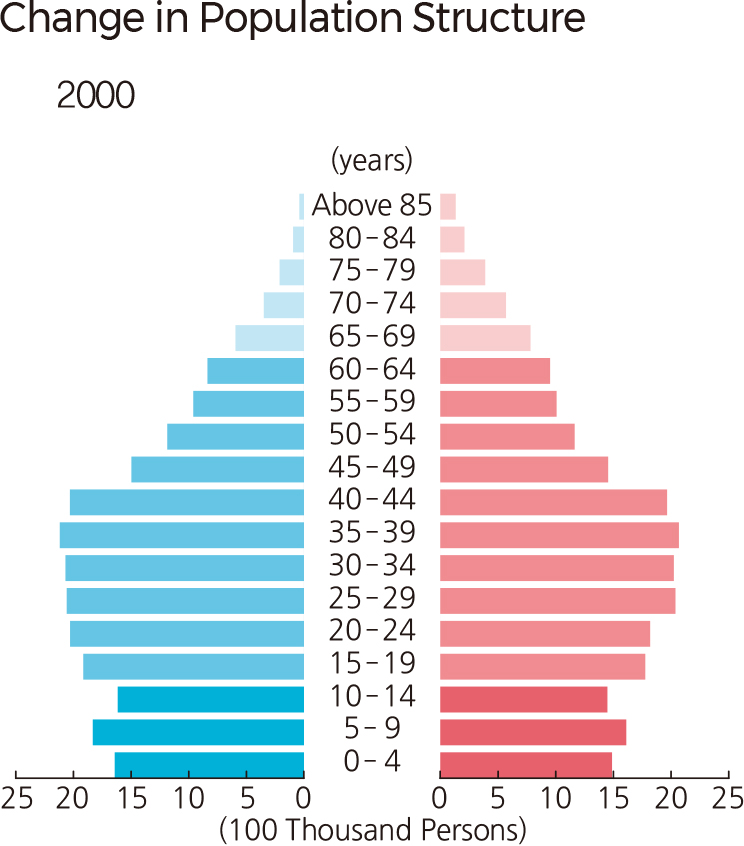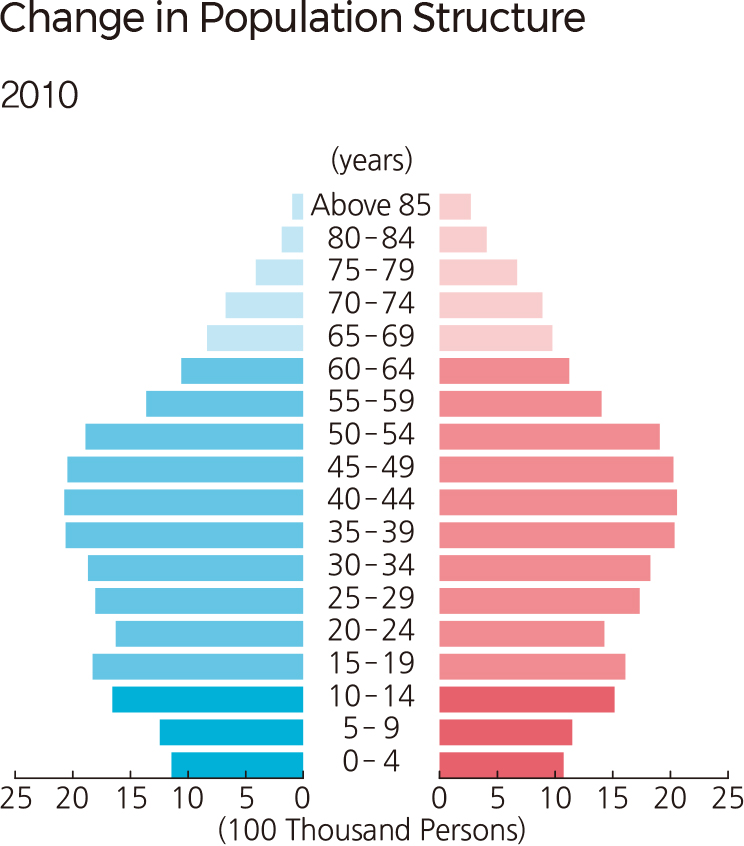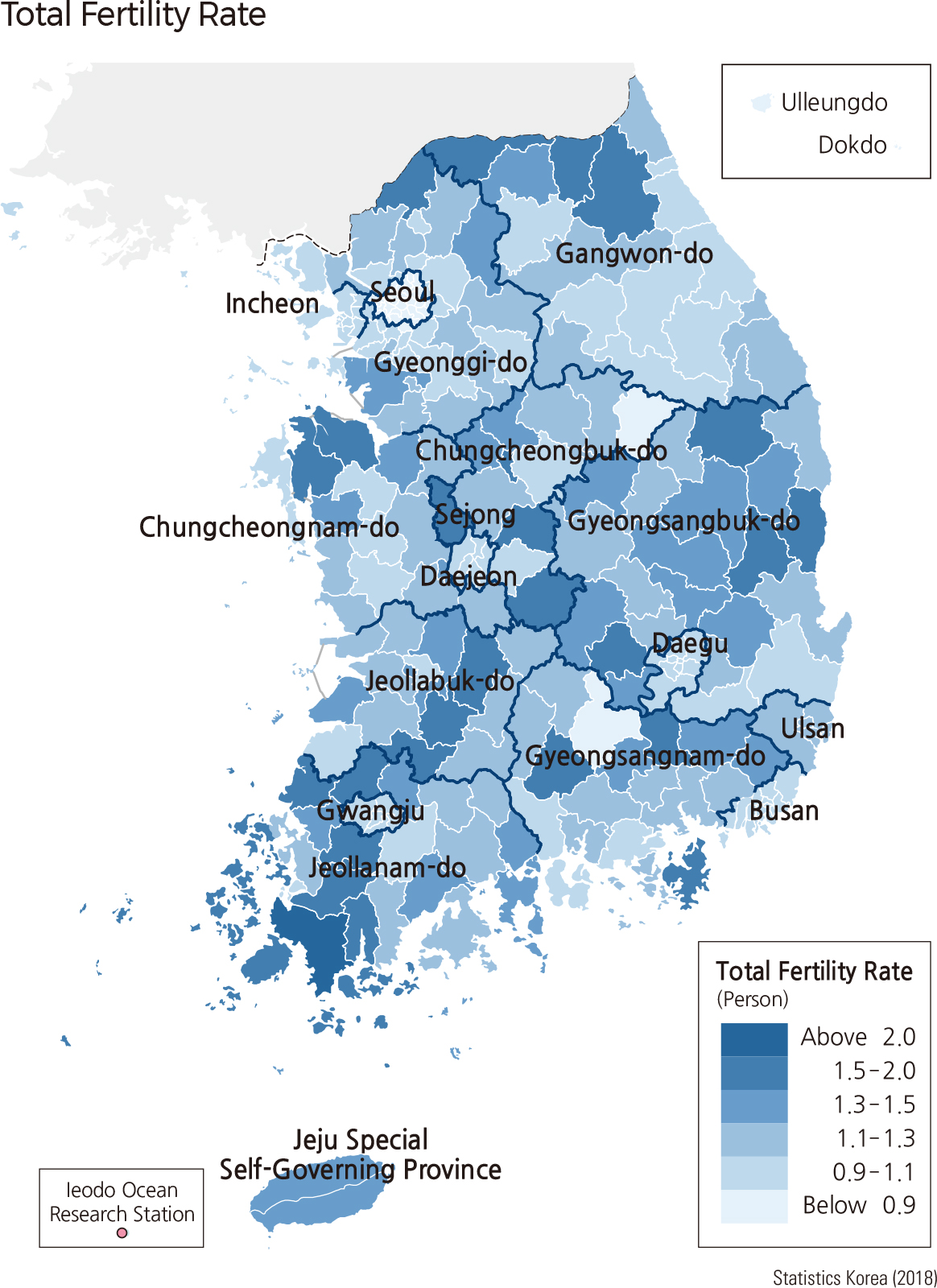English I 2019
An aging population and fertility decline have drastically changed Korea’s population structure. In 2000, Korea became an aging society, with over 7% of the population aged 65 years or older. The population is moving towards an aged society at a faster rate than other nations; in 2017, over 14% of the population was aged 65 years or older. Although a more extended life expectancy has affected the population aging, the decline in the birthrate has played a crucial role. Total fertility rate (TFR) is a standard demographic indicator used internationally to estimate the average number of children that a woman would have over her childbearing years, based on current birth trends. In the early 1970s, the TFR was about 4.5 but had declined to below-replacement fertility in the early 1980s. According to OECD standards, the TFR is classified as a "low birth rate" if it is below 2.1 births per woman and "super low birth rate" if falls below 1.3. Both TFR and the number of babies born each year rapidly decreased through the financial crisis in the late 1990s. Korea has become a super low fertility country since 2002 (TFR of less than 1.3) and recorded a TFR of 0.98 in 2018. The demographic changes with the population pyramid start to round out and look similar in shape to a tombstone. The rapidly aging population and associated demographic changes have raised serious issues that might cause enormous social and economic effects. |

